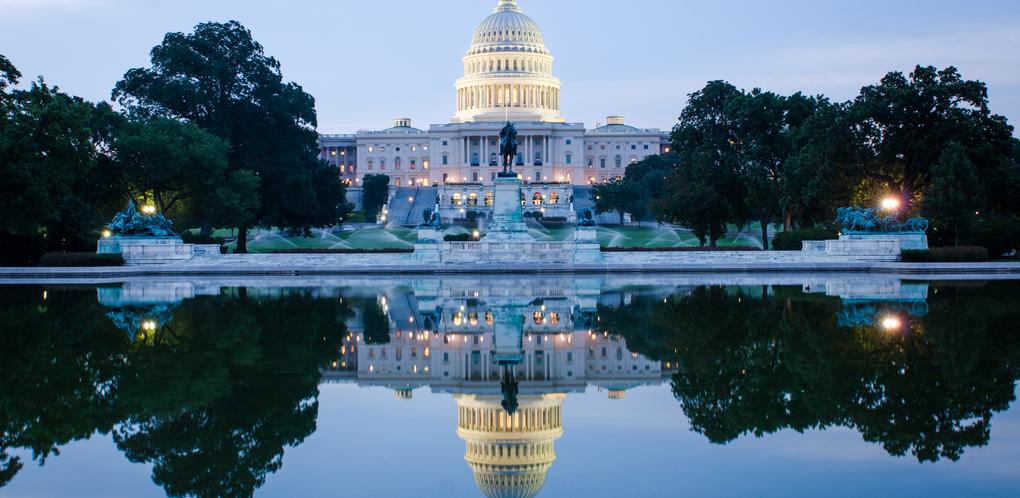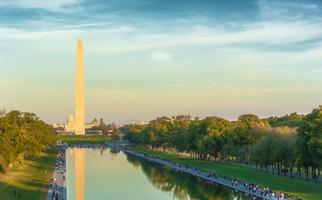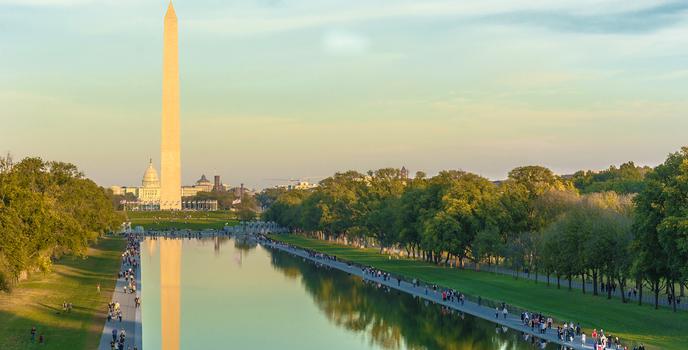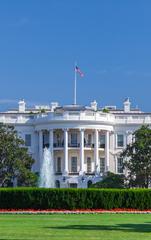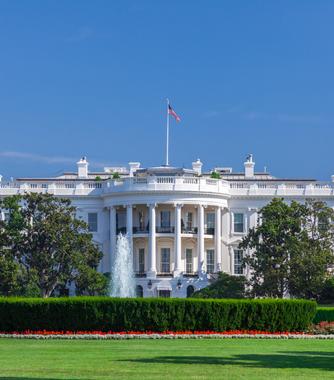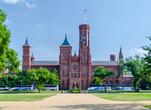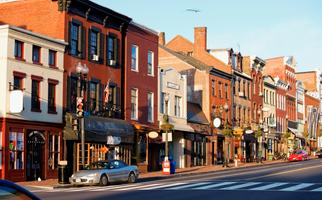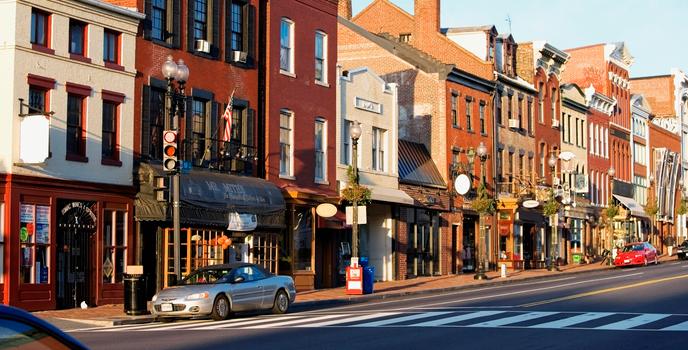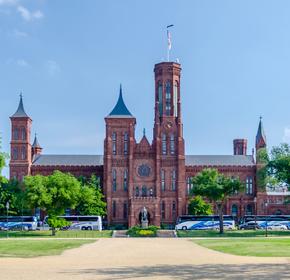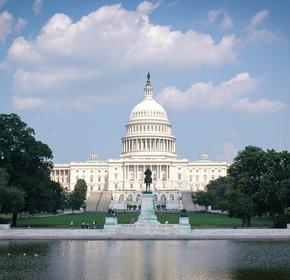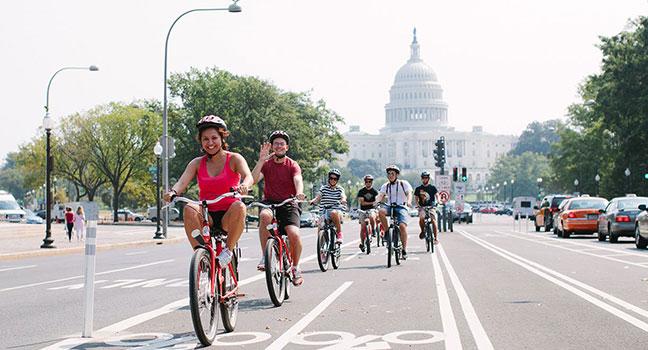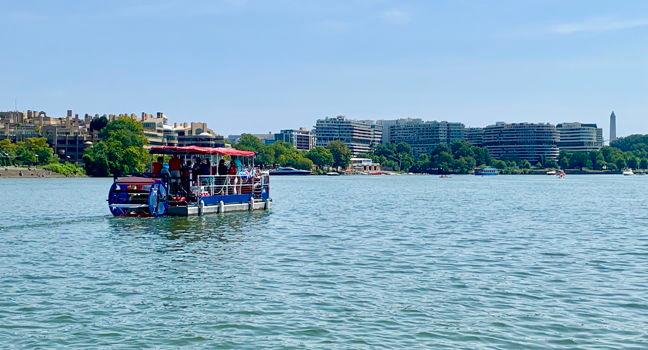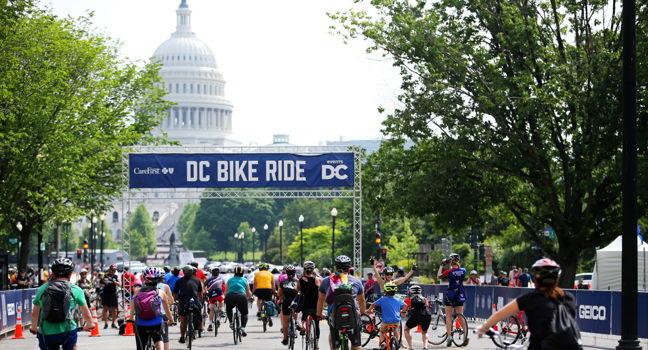1. National Mall: Welcome to the United States
The National Mall is host to America's greatest museums, monuments, and memorials. The Washington Monument is the centerpiece, flanked by the Lincoln Memorial and the Capitol Building, home to U.S. Congress. This cultural stretch can satisfy all interests, and popular highlights include the stunning Vietnam War Memorial, and the National Gallery of Art, which carries a world-renowned collection.
2. White House: Presidential Grounds
Home to every American President for the past two centuries, the White House is one of the most famous buildings in the country. The house is viewed by countless tourists from the lush surrounding gardens every day. With secret service agents casually surrounding the property, a visit to this house is like walking into a dramatic film set.
3. Smithsonian Castle: "...for the increase of knowledge."
The Smithsonian is an all-American institution boasting dozens of museums and research centers. The Smithsonian Building stands like a castle on the National Mall, architecturally magnificent and surrounded by it's finest gems. Favorites include the National Museum of Natural History, and the Air and Space Museum, home to the world's first airplane and countless spacecraft.
4. Georgetown: Historic Georgetown
The charming neighborhood of Georgetown is known for its historic 18th and 19th-century houses and quaint cobblestone streets. Nestled along the Potomac River, this popular area is beloved for trendy shopping opportunities, gourmet experiences and a slew of R&R activities along the waterfront. There is something for everyone in Georgetown!
5. United States Holocaust Memorial Museum: A National Memorial
The Holocaust Memorial Museum is an institution that has reached millions with messages of tolerance and anti-genocide since it opened its moving halls in 1993. The collection and architecture work together to create a reflective and educational experience for visitors. With museum-goers hailing from a constellation of backgrounds and nationalities, it is a personal experience for all.
6. Arlington National Cemetery: Tribute to America's Fallen
Set on 624 acres, the Arlington National Cemetery honors American fallen soldiers. Dating back to the Civil War, the cemetery was built on the estate of Arlington House, Robert E. Lee's family home. The landmark includes the Arlington National Cemetery Historic District, which contains the Hemicycle, Memorial Drive, and the Arlington Memorial Bridge. The area also includes the Arlington Memorial Amphitheater, which hosts Veterans Day and Memorial Day services, as well as funeral and memorial services. The most frequently visited sites at the cemetery include the graves of President John F. Kennedy, Jacqueline Kennedy Onassis, Senator Robert F. Kennedy, and Senator Edward M. Kennedy. Also buried at Arlington are the astronauts killed in the 1967 Apollo 1 Command Module fire flash Gus Grissom and Roger Chaffee, as well as Senator John Glenn, the first American to orbit Earth.
7. Iwo Jima Memorial: Homage to the Marine Corps
The United States Marine Corps War Memorial, also known as the Iwo Jima Memorial, was founded in 1954. The site is dedicated U.S. Marine Corps who have died in the line of duty since 1775. The design of the memorial is based on the 1945 photograph shot by AP war photographer Joe Rosenthal, who captured six Marines as they raised the flag on Mount Suribachi during the Battle of Iwo Jima in World War II. The memorial was created by sculptor Felix de Weldon and architect Horace W. Peaslee, who received funding for the landmark in 1947. The landmark, which features inscriptions commemorating all major Marine Corps battles, is cast in bronze and sits atop a black granite base from a quarry in Lönsboda, Sweden. In 1961, President Kennedy declared that the American flag would fly over the memorial in perpetuity.
8. Fort McHenry: An Important American Landmark
Fort McHenry, a coastal star-shaped fort used in the War of 1812, was built in 1798. Designated a National Monument and Historic Shrine in 1939, the fort features a replica of the 15-star/15-stripe U.S. flag. Francis Scott Key wrote the Star Spangled Banner at the fort following a bomb raid by the British in 1814. The national landmark, which holds a 4th of July celebration complete with cannon firings and a performance by the Guard Fife and Drum Corps, can be accessed by Water Taxi from Baltimore's Inner Harbor.
9. National 9/11 Pentagon Memorial: Gone But Not Forgotten
Designed by Julie Beckman and Keith Kaseman, the National 9/11 Pentagon Memorial is an outdoor landmark that honors the 184 people who died in the Pentagon and aboard American Airlines Flight 77 during the September 11, 2001 terrorist attacks. Inaugurated on September 11, 2008, the memorial features benches placed over reflecting pools that face the Pentagon's southern façade and bear the names of the victims, as well as a wall along the edge of the landmark that grows from three inches and to seventy-one inches, the ages of the youngest and oldest victims of the terrorist attack.

